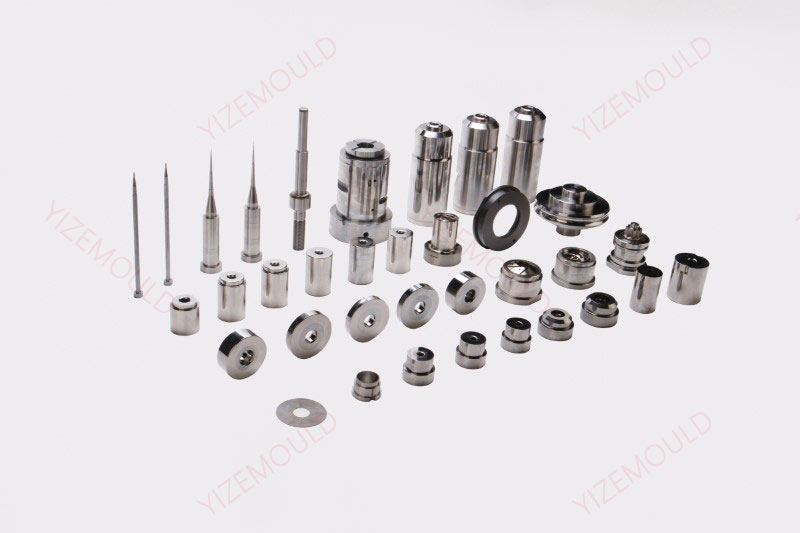How is carbide made?
The production of carbide materials primarily involves two methods: powder metallurgy and molten metallurgy. Carbide components are typically manufactured using the former method, shaping them into various forms such as […]
The production of carbide materials primarily involves two methods: powder metallurgy and molten metallurgy. Carbide components are typically manufactured using the former method, shaping them into various forms such as rods or plates. Subsequently, they undergo mechanical processing, including wire cutting, grinding, CNC (Computer Numerical Control) machining, EDM (Electrical Discharge Machining), and polishing, to achieve the desired shapes and specifications. Carbide, known for its high hardness, wear resistance, and corrosion resistance, finds extensive applications in various industries, including cutting tools, mining equipment, molds, automotive components, and more.

Our factory business: carbide parts, mold parts, medical injection molds, precision injection molds, teflon PFA injection molding. email: [email protected],whatsapp:+8618638951317.
Poder Metallurgy
Powder metallurgy, a main method for producing carbide, involves mixing metal and non-metal powders in a certain ratio, then forming and sintering. The steps include:
- Raw Material Preparation: Mix metal and non-metal powders in a specific ratio, followed by sieving and drying to ensure uniformity.
- Pressing: Press the mixed powder in a mold under high pressure to form a blank.
- Sintering: Sinter the blank in a high-temperature furnace, typically at 1300°C to 1500°C for 1 to 4 hours, to gain strength and toughness.
- Post-processing: The sintered blank undergoes cutting, grinding, polishing, etc., to become the final product.
Molten Metallurgy
Molten metallurgy, another main method, involves melting metal and non-metal materials, cooling into a blank, then further processing. The steps include:
- Raw Material Preparation: Mix metal and non-metal materials in a specific ratio, followed by sieving and drying.
- Melting: Melt the materials in an electric furnace. The melting temperature is usually between 1600°C and 2000°C. The molten alloy needs slag removal and insulation.
- Blank Casting: Pour the molten alloy into a casting mold to cool into a blank.
- Heat Treatment: Heat treat the blank to achieve certain strength and toughness.
- Post-processing: The heat-treated blank undergoes cutting, grinding, polishing, etc., to become the final product.
how to choose the carbide manufacturing method
Powder metallurgy and molten metallurgy, both common methods for carbide production, have their advantages and applicable scenarios. Choose the appropriate method based on specific requirements and practical situations:
- Powder Metallurgy: Suitable for complex-shaped carbide parts, higher material utilization, but more complex process.
- Molten Metallurgy: Suitable for larger carbide parts, simpler process, but lower material utilization.
Regardless of the method, strict control of process parameters is necessary to ensure the carbide’s performance and quality.
Tips for Carbide Production
In carbide production, certain tips can enhance quality and efficiency:
- Use high-quality raw materials to ensure uniformity.
- Control sintering temperature and time for ideal carbide properties.
- Follow safety procedures strictly to ensure safe production.
With the right manufacturing method, you can produce high-quality carbide products.






